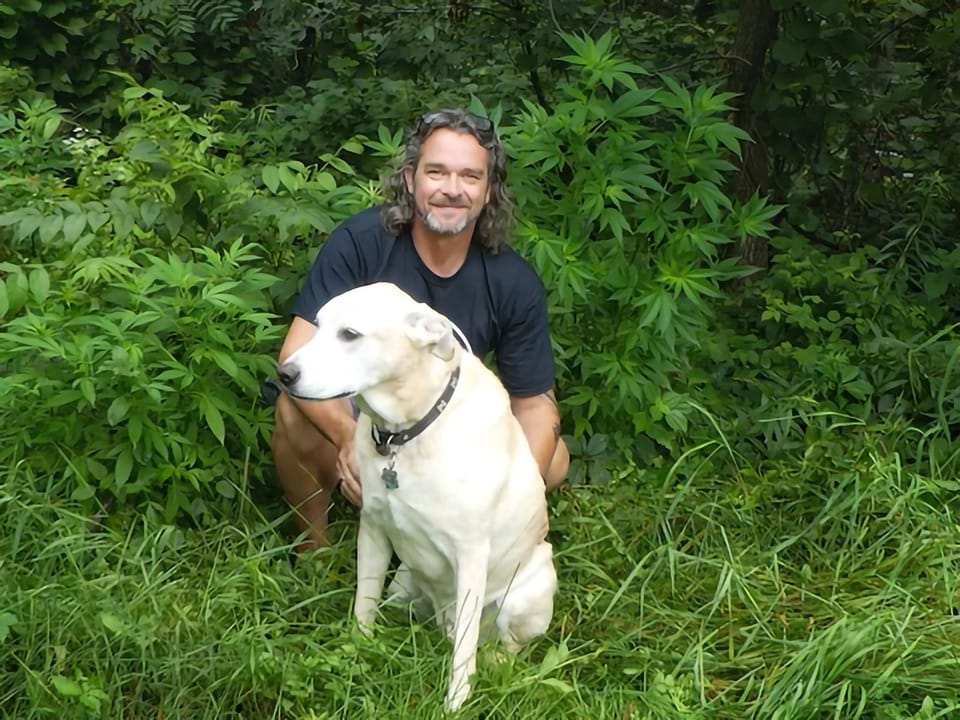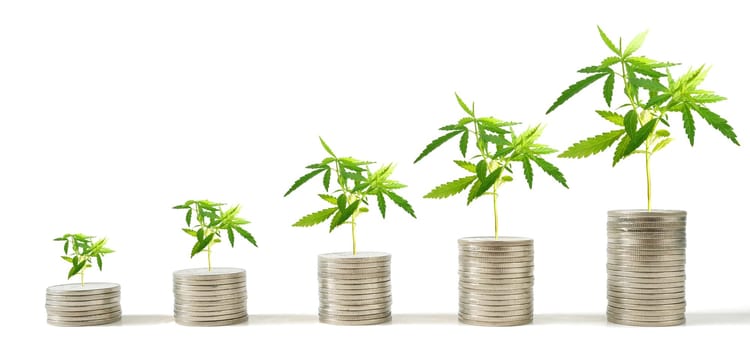GOT DIRT? SOW, GROW!

There are few things as quintessentially Midwestern as the sweet taste of a cherry tomato fresh off the vine from your backyard garden. My childhood is filled with memories of the taste of those sweet tomatoes and the sight of giant zucchinis that grew too long before harvest (and the excitement my mother had on the way home from every camping trip because she couldn’t wait to see what her garden had done while she was away).
Sowing and growing your food is a big flex (and fairly common) across many Midwestern households. Growing your own cannabis for consumption isn’t all that different.
When the Minnesota Adult Use Cannabis Act went into effect in August 2023 (allowing for recreational cannabis consumption), a cornerstone provision allowed consumers to grow their cannabis. While not unique to Minnesota, many legal states either do not allow it, or it’s pretty limited in comparison.
It can be intimidating to start any new endeavor, so I sat down with Shane Soberg of TimberGhost Organics to discuss what is needed to begin one’s foray into the world of cannabis cultivation.
The first decision you need to make is whether you will grow indoors or outdoors. There are advantages and disadvantages to both.
Outdoor cultivation has been the standard since cannabis became a cultivated crop in Mesopotamia, which is referred to as the Fertile Crescent and the cradle of modern agriculture. The people grew it for everything from resin to seed to fiber.
The sun, wind, rain, and soil provide all the stress and energy a plant needs to grow. Over the four to six months it takes to cultivate cannabis, these stressors cause the plant to fight, grow, and ultimately produce beautiful resin glands. It is inside those resin glands, called trichomes, that we find the medicine our bodies respond so well to (cannabinoids and terpenes).
With the earth providing all the necessary nutrients, the roots can grow deep to anchor the plant firmly, allowing it to blossom to its full potential.
Like many things in life, the factors that cause us to grow and become resilient are often the same things that can knock us down. Too much water can waterlog the roots and, in late-stage production, cause mold to grow and the buds to rot.
Strong winds can topple the plants, subjecting them to contamination from the soil.
Bugs and larger pests can also create challenges for plants.
On the positive side, the startup cost is minimal, and if you are already a gardener, this will all feel very familiar. The combination of nature and genetics largely dictates how much flower the plant yields, but close attention still needs to be paid to her so she can bring that harvest to its full potential.
Our growing seasons here in the Midwest are shorter than in other cannabis-producing regions. So, just as you might have to cover your tomato plants at night, cannabis plants also need a certain level of care and attention.
Indoor cultivation gives you much more control over your variables (light, water, pests) but comes with a more significant startup cost. At a minimum, to house and maintain your grow, you will need a tent, lights, and humidity control.
There are also ongoing costs like water and electricity. If you are still getting familiar with indoor grow tents, think of a small plastic cube, typically 2 feet by 4 feet. There is usually a zippered entrance to access the plants, and the inside is covered in a reflective material that helps the plants access more energy.
You’ll need a set of lights (LED, HID, or fluorescent are popular) and decide on the medium you will grow in (soil, water, or air). “Keep it simple,” Shane advises, noting that lights produce the yield and soil affects the quality. Additional materials include meters to measure temperature and humidity, as well as a fan to circulate the air.
Some advantages of growing indoors are minimal pest interruptions and more manageable pest control options. Shane suggests keeping a potted basil plant in your tent to help deter pests. Growing indoors also ensures the plants are getting enough energy even on the cloudiest and rainiest of days.
Conversely, because they are in pots and not in the ground, their growth is bound by the size of their containers. While this may lead to smaller yields, keeping your variables consistent will keep your yield consistent. You also can grow 2-3 harvests per year indoors versus a once-a-year fall-only harvest outdoors.
Knowing what to grow can be just as important and challenging as the actual process of growing! If you are interested in growing your own, now is the time to start making notes about what cannabis you like and why.
We have historically divided the types of cannabis into the nomenclature of indica and sativa. While this is great for describing the morphology of the plant, what we are trying to describe are the feelings we get from the plant - relaxing and energizing, respectively. Those outcomes are only sometimes predictable when genetics are chosen from the broader categories of indica or sativa only.
Each plant cultivar grows a little differently, and it takes time to develop a relationship with “the plant” as you learn to read its signs and anticipate its needs. “I let the plants do what they want, and I just give them what they would find in nature,” Shane says, pointing out the richness of the soil in the St. Croix River Valley.
You can start your grow from seeds, or you can purchase a cutting from a mother plant (clone). For a beginner, starting with autoflowering genetics is a good choice. It will go from a vegetative to a flowering state regardless of how much you interfere with it. Your yield is typically lower, but it is a great way to begin and learn what works for you.
If you are more advanced, you can purchase a feminized seed. These seeds have been pollinated but must be pushed into flower (by varying the light cycle) when grown indoors.
After the growth cycle is complete, you harvest, dry, and stabilize (cure) the flower. This skill is learned over time and is different for each plant.
Generally speaking, you want the colas (buds) to become thick and dense and the trichome glands that cover them to become milky and cloudy. These trichomes contain the beneficial components of the plant - major and minor cannabinoids like THC, CBD and others.
Less is more when it comes to touching the colas. Those trichomes are like ripe fruit waiting to be shaken off the tree. You must be very careful that you don’t knock them all off during harvest.
When the plant is ready to be harvested, it is cut by the stalk and hung upside down so the drying process can begin. This is similar to harvesting and stabilizing other fresh herbs and flowers. The goal is to spend a few days in a heat and humidity-controlled environment to reduce the moisture significantly, then slowly continue to reduce it until it reaches around 60% relative humidity.
From there, it should be kept away from light and heat, and it can be helpful to use a humidity control pack like Boost or Boveda to keep the humidity stable. Shane suggests covering the jar and keeping it in the refrigerator. A mason jar is perfect for this, and it adds that homespun touch.
If you don’t enjoy smoking cannabis but want to reap the benefit of your hard work, you can make edibles, tinctures, or topicals at home in your kitchen. It’s important to note that for you to receive the full healing potential of the plant, it must be heated to 220°F for 30-45 minutes for the medicine to be activated. This process is known as decarboxylation. You can infuse any mediums like olive oil, coconut oil, alcohol, and more. One of my favorite things to do is save all the trimmings of my cannabis and mix them into a casserole.
Growing your own can seem overwhelming, but just take it one step at a time. Remember, a bad time spent gardening is still a better time spent than most other things!
WHY GROW YOUR OWN?
You know who grew it, how it was grown, and what chemicals (or lack thereof) were used.
You can grow a specific strain of cannabis with properties that you find effective in reaching your goals for consumption (it can be challenging to get consistent quality products season over season).
After subtracting the initial setup costs, growing your own cannabis is much more cost-effective.
Because it is FUN! Cannabis itself does not have addictive properties (but growing it is another story).



